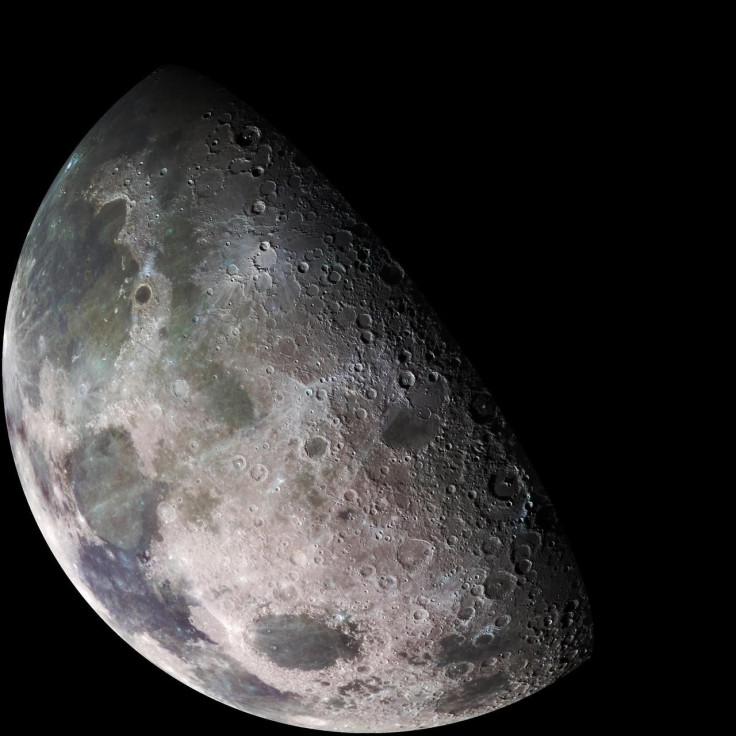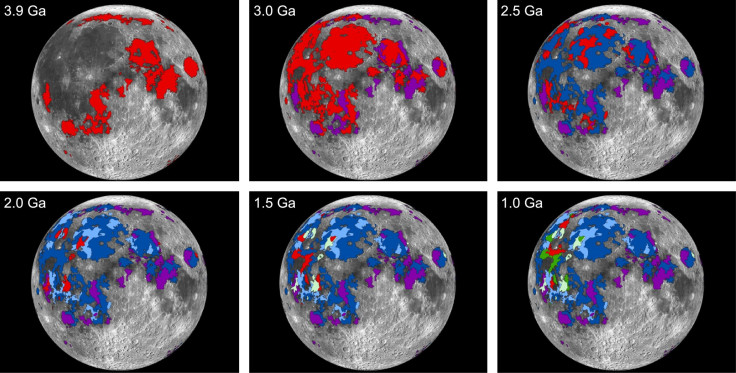Erupting Volcanoes Gave The Ancient Moon A Temporary Atmosphere

Volcanoes on the moon may have erupted water and gases that created an atmosphere thick enough to for wind to blow.
Scientists reported their findings after researching how much lava would have erupted on the lunar surface over the last few billion years and analyzing volcanic rock samples that astronauts brought back to Earth. They were looking for estimates on the amounts of gases that were released as the lava gushed to the moon’s surface between roughly 1 billion and 4 billion years ago, and found that the gases would have made an atmosphere for part of that time.
NASA’s Marshall Space Flight Center reported that the atmosphere was mostly carbon monoxide, sulfur and water and would have surrounded the moon for about 70 million years.
“As volcanic activity declined, the release of the gases also declined,” the space agency said. “What atmosphere existed was either lost to space or became part of the surface of the moon.”
Scientists have previously detected water on the lunar surface, and the amount of water erupted during this peak volcanic period about 3.5 billion years ago — “potentially three times the amount of water in the Chesapeake Bay,” NASA said — could account for all of it.
The ancient lunar atmosphere would have been 1.5 times thicker than the gases that surround Mars today, according to a study in the journal Earth and Planetary Science Letters.
Mars, however, has just a third of the atmosphere it used to — research says the planet lost most of its gas to space, which played a role in that world turning from a warm and wet place into a dry and cold one.
In the case of the ancient moon’s atmosphere, “these gas volumes are sufficiently large to produce a significant atmospheric surface pressure,” the study says. Someone standing on the surface of the moon at that time would feel about 0.15 pounds of force per square inch, according to the research — about 1 percent of the pressure on Earth’s surface right now.
NASA said the atmosphere would probably have been thick enough to be “capable of weathering rocks and producing windstorms.”
“It just completely changes the way we think of the moon,” planetary volcanologist Debra Needham said in the Marshall Space Flight Center statement. “It becomes a much more dynamic planetary body to explore.”
The analysis of the moon’s volcanic activity could help scientists who are preparing astronauts for future moon missions. As the space agency notes, the explorers may have to utilize the resources available on the moon, including its water, and having more information about the water’s origin could guide them.
“Casting one’s eyes at the moon or viewing it through a telescope, the surface of the moon today gives but a glimpse into its dynamic and complex history,” NASA said. “Recent findings that propose Earth’s neighbor once had an atmosphere comparable to Mars’ continue to unravel the lunar past, while prompting scientists and explorers to ask more questions about Earth’s mysterious companion in the solar system.”

© Copyright IBTimes 2024. All rights reserved.




















